Toothache is believed to be the most severe pain. However, the same applies to earaches and headaches. Joint pain is no exception. It can make a person suffer, deprive him of sleep and appetite.
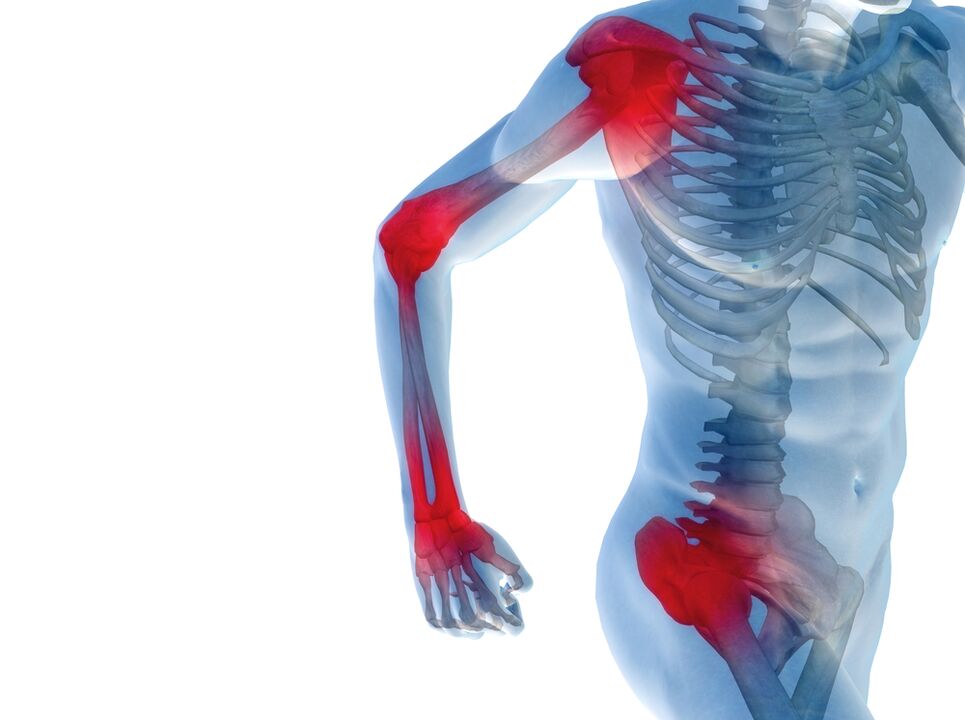
Pain is sharp or dull, stabbing, aching, at night or during the day - all of these are symptoms of joint diseases.
Prevalence of joint pain
There is no clear pattern between the severity of joint pain and its prevalence. The knee joint can hurt more than the shoulder, elbow and hand at the same time. Sensations in the spine can be painful with extensive osteochondrosis or ankylosing spondylitis. But more often people suffer from pain in their extremities.
Both arms and legs are exposed to significant stress throughout life - weight, movement, injuries. Pain, joint pain and their deformation are inevitable side effects of age-related changes in the musculoskeletal system.
Mechanism of pain
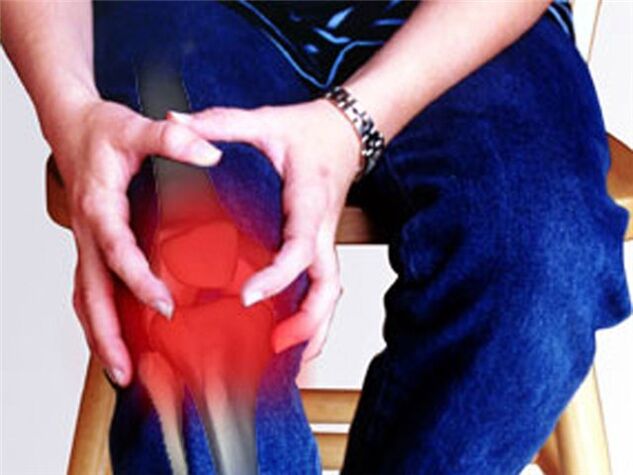
Why joints hurt is a question that even a doctor has difficulty answering clearly.
The pain mechanism when the musculoskeletal system is damaged is quite complex. Most often, these symptoms are caused by the following processes:
- Joint inflammation or polyarthritis.Inflammation itself triggers the production of substances that can cause pain. In addition, they increase the sensitivity of pain receptors to repeated exposure. Therefore, the usual stress on the inflamed joint leads to a strong pain reaction.
- Swelling of the joint.Its increase in volume looks like a joint tumor. Edema tissues exert mechanical pressure on the joint structures, causing discomfort and exacerbating the severity of the process.
- Dystrophic changes.This can be referred to as wear and tear of bone and cartilage. With increasing age and constant stress, the function of the joint decreases. The production of synovial fluid is disrupted and sliding of the joint surfaces becomes more difficult. Their constant irritation by friction stimulates the growth of the subchondral bone. Such marginal bone growths are called osteophytes and can cause real suffering to a person. They look like protruding bumps on the joints. Osteophytes are often injured, leading to inflammation and closing the pathological circle.
- Trauma and post-traumatic complications.Serious injuries: bruises, dislocations, fractures do not disappear without a trace. Even if the damage is healed, joint pain and stiffness can persist for the rest of your life. Doctors often complain about aching pain in damaged joints. They usually get worse when the weather changes or at night.
- Exchange disruptions.Due to metabolic disorders, calcifications build up in tendons and ligaments. Their injury leads to severe pain syndrome.
These pathological processes in the joints arise from diseases of the musculoskeletal system.
Diseases of the musculoskeletal system
The number of joint diseases is large. There are rare forms - isolated around the world, and there are also those that occur in most people. The frequency of these diseases explains why everyone suffers from joint pain at least occasionally.
It is important to know the main diseases of the musculoskeletal system in order not to ignore dangerous symptoms, but to start treating and curing the disease in a timely manner.
arthrosis
Doctors often hear from older patients that they have pain in the joints of their arms and legs, lower back, and neck. In addition to pain, they complain of joint deformities, difficulty walking, and inability to do homework.
These symptoms are characteristic of osteoarthritis of the joints. When bones and cartilage are deformed, this is called deforming osteoarthritis. Deforming osteoarthritis in severe form can lead to complete disability.
Osteoarthritis affects every joint – large or small. The only important thing is that they experience enough stress.
If the joints are overloaded, osteoarthritis occurs several years earlier, especially if there are predisposing factors. These include:
- Constant load. It can be redundant or monotonous. Static loads play an important role in the development of arthritic changes.
- Hypothermia or overheating.
- Injuries – Bruises and fractures, subluxations and dislocations.
- Overweight. Obesity is one of the most important risk factors for the development of deforming osteoarthritis.
- Poor diet.
- Lack of exercise.
- Infections and subsequent inflammation of the joints are known as polyarthritis.
Degenerative diseases of the shoulder girdle
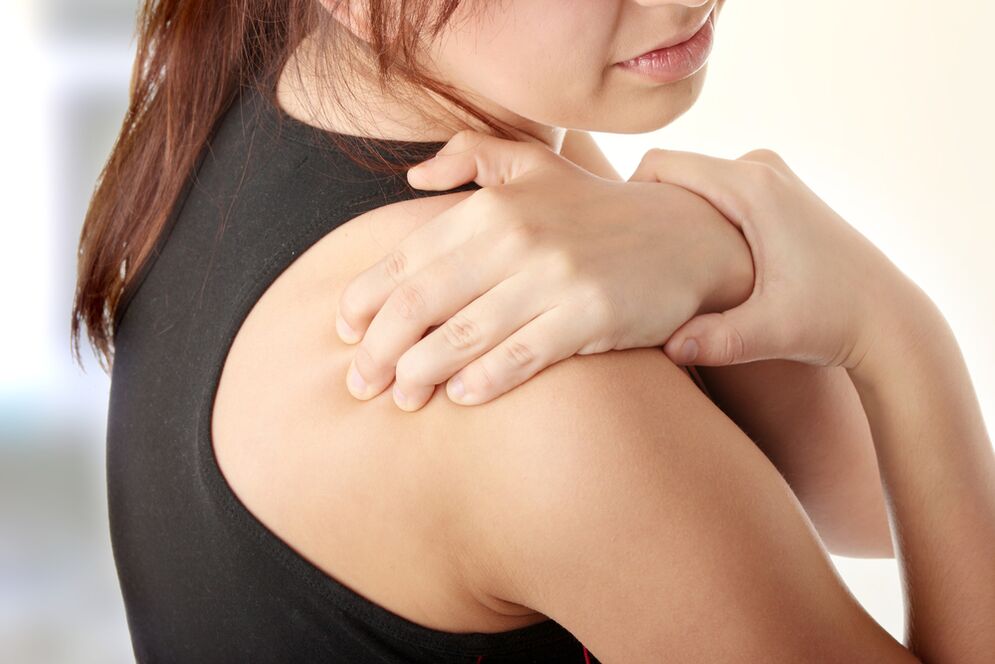
The shoulder joint is the most mobile joint in the body with the greatest range of motion. Because it is exposed to dynamic loads, degenerative changes in the structures of the shoulder girdle are rare.
They usually develop with age. Marginal bone proliferation and articular cartilage atrophy occur. If degenerative changes in the shoulder joint are pronounced, the cause should be looked for. This usually happens due to a fracture or osteochondromatosis.
Pain in the shoulder joints is painful and constant; Stiffness is often accompanied by degenerative changes in neighboring structures:
- Deposition of calcifications in the supraspinatus tendon and resulting painful abduction arch syndrome. With this pathology, joint pain occurs when trying to move the shoulder along a certain arc. If you change the angle of inclination, the pain disappears.
- Frozen shoulder syndrome. This condition is characterized by severe stiffness of the shoulder girdle. Occurs as a result of prolonged immobilization of the shoulder - when applying a bandage that gives rest to the arm in thoracic radiculitis.
No pronounced deformation of the elements of the shoulder girdle is observed. Symptoms and complaints that are associated with damage to neighboring structures and not with deforming arthrosis of the shoulder are usually the focus.
Osteoarthritis of the elbow joint
The likelihood of degenerative changes developing in the elbow joint is low. It increases with age and among people who practice certain professions. Monotonous physical activity negatively affects joint processes, especially when exposed to vibration.
Deforming osteoarthritis in the elbow area is common in tennis players, bricklayers and miners, blacksmiths and foundry workers.
Usually the pain in the joints is dull, achy and increases with physical activity. No significant deformation of the joints is observed. Sometimes, under the influence of provoking factors, joint inflammation joins arthrosis, painful swelling occurs in the elbow area and the pain bothers you even when you are resting.
Deforming osteoarthritis of the hands and finger joints
In recent years, the diagnosis of arthrosis of the hands has become the answer to the question of why finger joints hurt at a young age. This disease is getting younger and younger. Already at the age of 30-35, signs of first degree deforming osteoarthritis can be seen on x-rays if there are complaints of pain in the finger joints. There are multiple reasons for that:
- The number of professions that put strain on the joints of the hands and fingers is increasing - programmers, typists and simply active computer users. And young people in particular are involved in this.
- Working in supercooled conditions. In winter, these are tram and trolleybus drivers, construction workers and villagers.
- Absence of normal dynamic loads on the finger joints. Few people strive to do gymnastics, especially therapeutic exercises.
- Concomitant diseases - joint inflammation.
The joints of the fingers and hands deform over time and an inflammatory tumor with the development of polyarthritis can be detected in the area of the phalanges. Movements in them become painful and difficult. The joint pain initially occurs sporadically, but then develops into constant, dull or aching joint pain.
Degenerative foot diseases
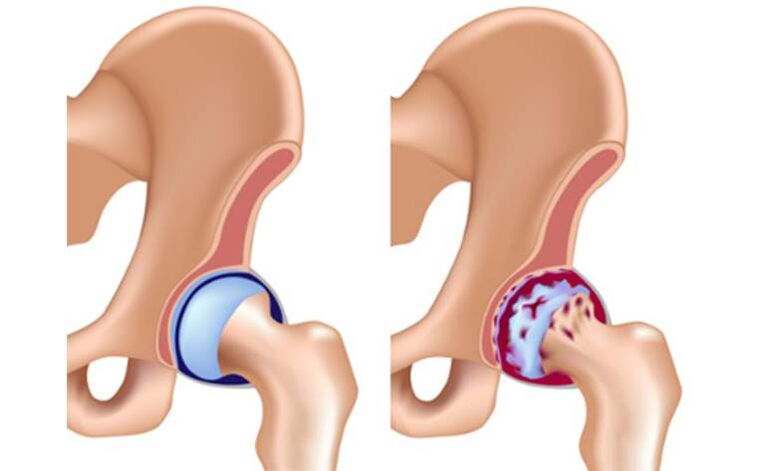
The joints of the legs are more susceptible to degeneration because their main load is static. Weight and static loads are the main causes of deforming osteoarthritis of the legs. In this area it occurs in the following forms:
- Damage to the hip joints – coxarthrosis.
- Damage to the knees with the formation of gonarthrosis.
- Dystrophic diseases of the foot.
Coxarthrosis
Coxarthrosis is a common and dangerous disease. First of all, a person pays attention to symptoms such as joint pain, crunching and clicking when walking. All of this is temporary and does not significantly affect the quality of life. As the disease progresses, the stiffness worsens and difficulty occurs when attempting to abduct or adduct the leg.
Joint pain can be excruciating and debilitating and can bother you at any time of the day. In the morning my movements are limited, I have to do exercises for the hip joints to move apart.
Gonarthrosis
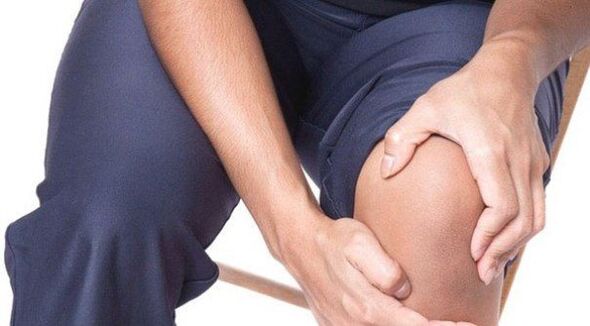
Over the course of life, the knees are exposed to loads that significantly exceed a person's weight. This inevitably leads to the development of degenerative processes in them. If a person suffers from at least first or second degree obesity, deformity of the knees occurs much faster. In the third and fourth degrees, deforming osteoarthritis tends to develop at a young age.
Osteoarthritis of the knee joints has its own characteristics. Why is joint pain so common in this area? In addition to the proliferation of bone spines and the degeneration of the cartilage, calcium crystals are deposited in the joint cavity. A kind of calcification deposit forms. This disease is called calcium pyrophosphate crystal deposition.
At first they are found only in the thickness of the cartilage, then on its surface, in the joint cavity, in tendons and even in muscles.
The deposition of calcium crystals worsens the course of deforming osteoarthritis. The disease manifests itself as aching pain, which can turn into acute pain when the calcification is pinched. The mobility of the legs is significantly limited. In the knee area, deformed joint surfaces, bone growths are visible and dense nodules can be felt.
Dystrophic changes in the ankles
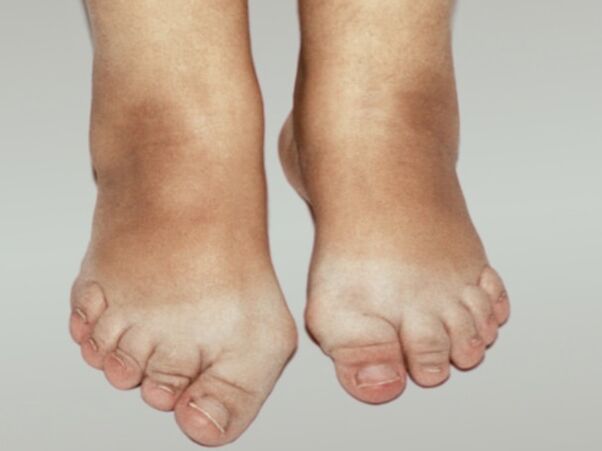
The joints of the feet are less susceptible to deforming osteoarthritis. An exception is the basal joint of the first toe. Its deformities appear in almost every person after 55-60 years. In women, deformation occurs at an earlier age. The reasons for this are the abuse of tight, uncomfortable heeled shoes.
In addition to the inconvenience and unaesthetic appearance of a deformed finger, a person experiences severe joint pain. As osteophytes grow, protruding bones form around the toe, making it difficult to wear even the widest shoes. Constant injuries to osteophytes lead to inflammation of the toe joints - polyarthritis develops. The situation can be complicated by the addition of an infection.
Inflammatory diseases of the musculoskeletal system
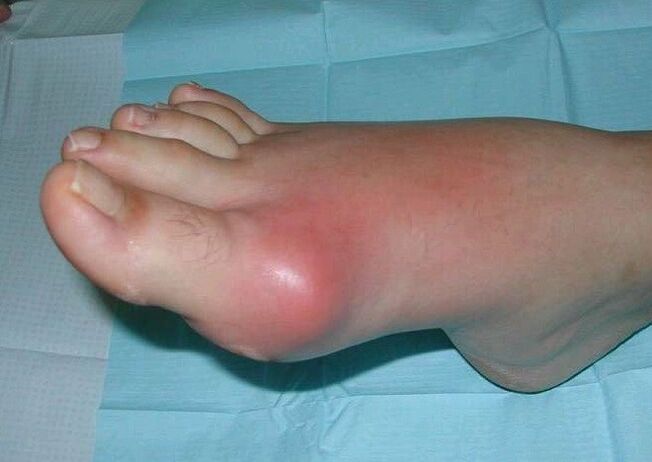
Joint inflammation that affects several joint groups at the same time is called polyarthritis. If only one joint is inflamed, it is called monoarthritis. Symptoms depend on the type of inflammation or infection that caused it:
- Joint pain.It is often acute – burning or stabbing. If the cause of arthritis is infection, the inflammation becomes purulent. In this case the pain is throbbing and very severe. In chronic and subacute forms, the joint pain is similar to the variant in osteoarthritis.
- change shape.In an acute process, an inflammatory tumor forms in the joint area, the skin color changes and the temperature rises. If a bacterial infection occurs, general symptoms of intoxication appear - high fever, chills and the state of health deteriorates sharply. The disease is particularly difficult to bear in the case of polyarthritis.
- Impaired function.Movement in an inflamed joint is significantly restricted due to pain and fluid accumulation in the joint cavity. This swelling, similar to an inflammatory tumor, mechanically prevents movement.
Causes of Arthritis
The causes of arthritis are varied. These diseases are usually divided into main groups:
- Contagious.They occur when the joint is directly affected by an infection such as Lyme disease. The infection can be viral or bacterial, enter from the outside or from an affected neighboring organ, the bone. Arthritis caused by a bacterial infection is particularly serious.
- Reactive.In this case, the inflammatory process develops in response to a previous or current infection. These include damage to the musculoskeletal system after flu, colds and urogenital infections. An important sign is the connection with an infection.
- Autoimmune.Sometimes a person's immune system begins to destroy its own cells. The manifestations of such diseases are varied, but the joint syndrome is usually the most obvious. The most common autoimmune disease is rheumatoid polyarthritis. It is characterized by severe deformation of the joints with persistent pain.
Autoimmune polyarthritis cannot be cured, but it must be stopped to keep the disease in its early stages.
Treatment of joint diseases
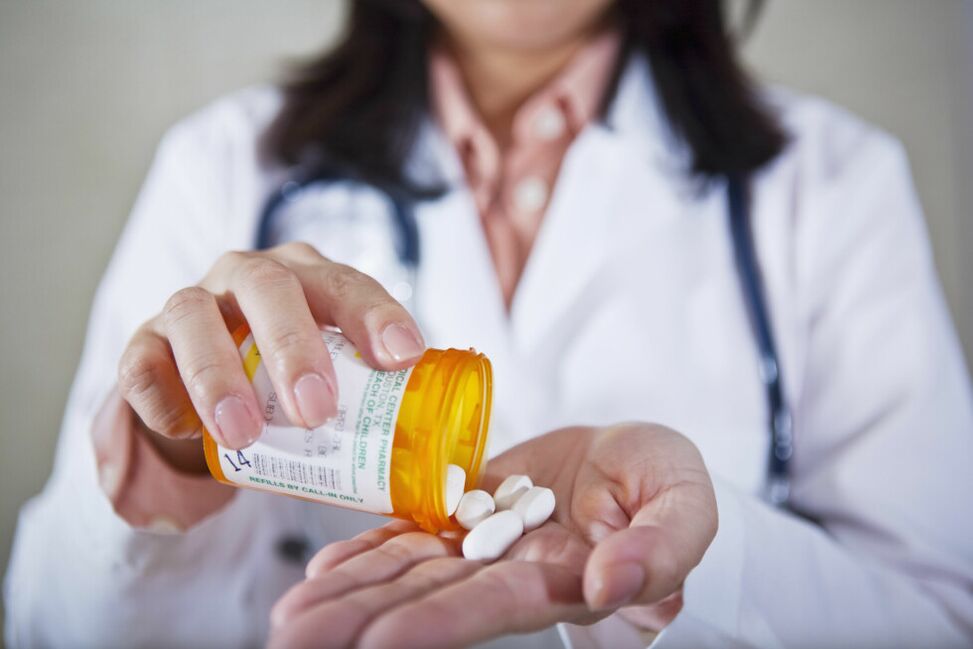
What to do if you are diagnosed with joint disease? Do I need to take medication or antibiotics or can I limit myself to folk remedies? Only a doctor can correctly answer all questions and prescribe the appropriate treatment.
ethnoscience
Folk remedies have been prescribed for a long time - both by healers and modern doctors. They are quite capable of relieving inflammation, eliminating pain and reducing swelling in the affected area.
Among folk remedies, cabbage leaf is considered the undisputed leader. Applying cold or a compress with honey to a painful joint can relieve inflammation and alleviate the condition. Plantain leaves, chopped mushrooms and vodka liqueur are also used.
The arsenal of folk remedies is diverse, but one must remember that they can only treat mild forms of diseases and always under medical supervision.
Medication
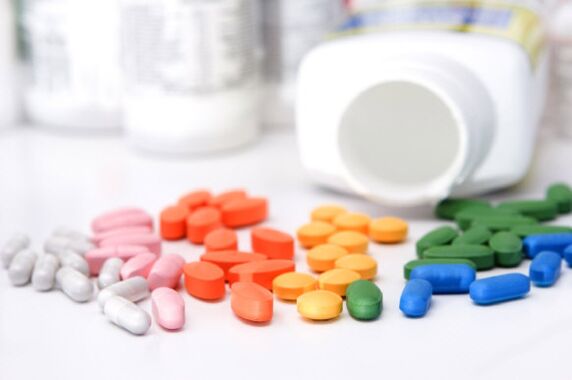
Drugs used to treat joint diseases target all parts of the pathological process. Main groups of drugs:
- Analgesics and anti-inflammatory drugs.Usually these are drugs from the same group. Since the main symptom of joint diseases is pain, relieving it is the doctor's first priority. A good effect is achieved by using local remedies.
- Steroid hormones and cytostatics.It is strictly forbidden to take these medications without a doctor's prescription. They are used for all serious autoimmune processes and are intended to specifically relieve inflammation in the body. Without hormonal drugs, it is impossible to get rid of the pain and inflammatory tumor in rheumatoid polyarthritis. They also prevent joint deformation.
- Antibiotics.They are prescribed when the cause of arthritis is a bacterial infection. Broad-spectrum antibiotics are used that penetrate well into the bone tissue. If the pathogen is persistent, the doctor may sometimes treat the infection with several groups of antibiotics. This is also justified if the disease is caused by a mixed infection. It is important to remember that antibiotics are strong medications with individual side effects and that you must strictly follow the doctor's instructions during treatment.
- Preparations that protect and restore cartilage.Without chondroprotectors, the treatment of chronic polyarthritis and deforming arthrosis is not possible. For this purpose, both individual drugs - chondroitin or glucosamine - and combined drugs are used. There is an extensive evidence base for the use of chondroprotectors, based on numerous clinical studies.
- Intraarticular injections.This is the best way to deliver the drug directly to the site of the disease. Typically, hormonal anti-inflammatory drugs are injected into the joint cavity. In recent years, hyaluronic acid has also been used for intra-articular injection.
physical therapy
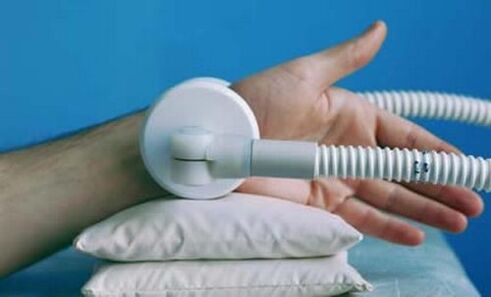
It is not worth treating joint diseases with medication alone. The integrated use of physiotherapeutic techniques (magnetotherapy, electrophoresis) and physiotherapy significantly increases the chances of recovery.
Orthopedic aids are also used to limit movement of the affected joints. These include orthoses and splints. The purpose of these devices is to reduce the load on the diseased joint.
Surgical treatment
Endoprosthetics is a radical cure for advanced osteoarthritis. Only with this method is it possible to replace a destroyed joint with a synthetic one and thus restore full mobility.
Endoprosthesis replacement is a treatment option in situations where conservative therapy is ineffective.

































